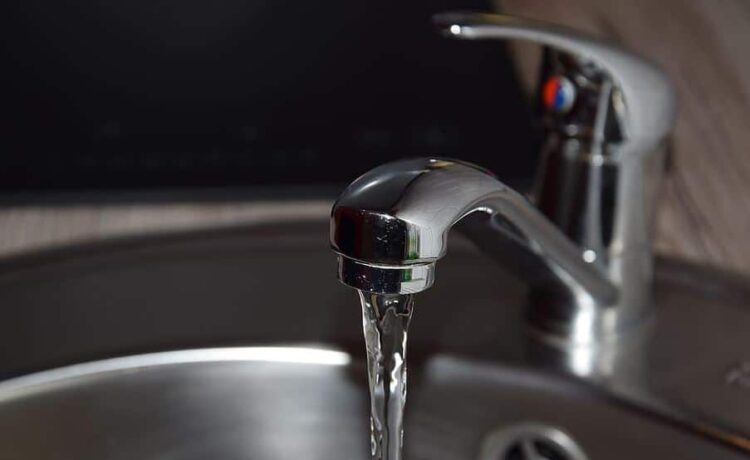Steps to Replacing a Faucet on Your Kitchen – Diy deco crafts – home decor, diy gift, diy craft ideas | Diy Ideen, Deko ideen

Kitchen faucets have a great impact on the look and feel of the kitchen. After a long use, your kitchen faucet may become outdated or start leaking. Replacing it is among the most popular job you can do yourself.
You can easily complete the entire replacement task without any error in a few hours according to the sink engineering guide. A clear and good set of instructions with the right tools is what you want to replace the old faucet.
10 Steps to Replace a Kitchen Faucet:
Replacing your kitchen faucet is not a difficult job as it may seem, and it may take a few minutes or hours to complete. To make it simple for you, we have put together a step-by-step guide on how to replace your kitchen faucet.
Tools required
- 4-in-1 screwdriver
- Rags
- Tube cutter
- Basin wrench
- Slip joint pliers
- Bowls
- Flashlight
Materials required
- New faucet
- P-trap
- Sandpaper
- Shut-off valves
Step 1: Do your homework
Before starting the replacement exercise, be sure to take your flashlight and have a look at the connections underneath the sink. It is crucial because it offers you a picture of what you are working with. Use a basin wrench to loosen the existing nuts.
Take notice of the replacements you have to do together with the faucet. You can take pictures to show the salesperson at the store what faucet and material you want.
Measure the supply lines for efficiency and effectiveness in case it is not provided with the new faucet.
Determining the right faucet for your sink
- Take measurements
- Measure the height. This includes the distance between the base plate and the furthest end on the spout.
- Measure the height of the spout. This includes the distance from the faucet base to the spout bottom
- Measure the spout reach. You can get this measurement by placing your tape at the neck’s central point and stretching it towards the nozzle.
Get the number of holes in the sink.
This can help you tell the kind of faucet you need. Get a flashlight and check for the holes below your sink.
Ensure you get a single-handle faucet if your current fixture is single-handle to avoid unnecessary issues when installing the new fixture.
Measure the distance between levers
This applies to the case when you find out that your faucet consists of double handles.
Step 2: Clear the space underneath the sink
Since you will need to work under the sink, consider clearing out anything present here. It is important to have your space free from any obstruction as you do the job.
Step 3: Disconnect the supply lines
You don’t want to get yourself and everything wet. To avoid this blunder, turn off the supply valves before disconnecting the lines.
Ensure you turn them off, both hot and cold. After you have done so, open your tap to ascertain that no water is coming out.
Then disconnect the supply lines. Use a basin wrench in turning the screw counter-clockwise to unscrew them.
Since there might be trapped water in the system, use a bowl to safely let the water in without wetting your workstation.
Step 4: Remove the old faucet
The faucet is usually held in place by one or more nuts below the sink. Use a basin wrench to unscrew these nuts conveniently. In case the nuts are made of plastic, use your fingers or pliers to unscrew the nuts.
Sometimes, the faucet can be difficult to loosen. If this is the case, employ your putty knife to gently insert it between the faucet and the sink as you lift it away gently.
Ensure that you do not scratch the sink as you work through this process.
Step 5: Clean the area
Don’t overlook this stage. After removing the old faucet, you might notice dirt or debris piled up over the years in the space between the sink and the old faucet. Get a rug, water, and soap, and clean the area.
Step 6: Position the supply lines
Check out to see if your new fixture has a single handle or double handles. With single handles, supply lines should go through the same hole.
If the faucet has double handles, be keen to correctly fix the hot and cold hoses into their place.
In case your old faucet contains a double-handle kitchen faucet, and you want to replace it with a single-handle faucet, cover the extra holes. You can use a deck plate to cover these additional holes.
Step 7: Finish installing your new faucet
The new faucet will come with installation instructions. Ensure that you familiarize yourself with the instructions before you embark on installing it.
After you have aligned the new fixture in place, tighten the nuts using a basin wrench. Don’t tighten them too much to avoid damaging the washers.
Step 8: Install the weight
This step is meant for the system to have a pull-down and pull-out function. If yours is one of them, it will require a weight system.
Check underneath your sink on the surface of your sprayer for a colored line. Manufacturers intentionally mark this line to help you know where to place the weight.
Step 9: Check out for leaks
Get a dry piece of cloth, and wipe through the supply lines and hose. Then turn the valves on. You can tell there are no leaks if the supply lines stay dry.
Step 10: Flush your faucet
Before you embark on using your newly installed faucet, flush it to eliminate any foreign particles in the channels. Remove the aerator from the spout.
If you wash with it in place, sediments might be stuck on the mesh screen. If you find it difficult to unscrew it with your fingers, you can use pliers but with a lot of care.
After removing the aerator, turn on the valves, both hot and cold. Then open your tap, alternating between hot and cold, to allow water to run for a few minutes.
With the systems having a sprayer head, you can remove the nozzle as well. Then rinse the sprayer head to remove sediments.
After finishing, screw the faucet head back. Also, screw the aerator back, and watch your well-done job.
Conclusion
Replacing your kitchen faucet should not be a complicated task. With the proper instructions as we have seen above, it is a do-it-yourself task.
It also boosts your confidence once complete. However, to do it perfectly, and avoid any error, make a clear plan.
Make sure you get the right faucet with the best material. Also, ensure you get the right tools for the task.
If you successfully replace your faucet by following the simple steps above, you will not be far from being able to make further replacements in your kitchen.






